History of the United Islamic Students Association Abroad
An interview with Mojtaba Baghernejad
Translated by: Fazel Shirzad
2019-11-12
Interviewed and compiled by: Mohammad Mahdi Musa Khan
Note: The United Islamic Students Association (U.I.S.A) of Iran in Europe, the US and Canada is the name of an organization that had been active abroad for nearly two decades before the Iranian revolution. The activities of this organization are important because they were considered one of the most important groups against Pahlavi regime before the revolution abroad, and after the revolution a number of executive power, middle and high officials were among those who had backgrounds and activities in these Islamic associations. The need to pay attention to the Islamic associations abroad and their historical status made us go to Mr. Mojtaba Baghernejad for an interview. He is a member of the United Islamic Students Association in Europe and the author and compiler of the book "the History of Islamic Students' International Campaigns abroad; The United Islamic Students Association in Europe is in 1966-1981 (5 volumes). During three sessions, we discussed with them about the history of the United Islamic Students Association and books written at homeland and abroad and critique. Mr. Baqarnejad, welcomed us openly and patiently answered each of the questions, although he was busy. Due to the length of interview, the text is ready for readers in three sections. In the first part of the interview, for the purpose of identifying the subject and its context for readers, questions were asked to venerable interviewee about the history of the United Islamic Students Association abroad and its importance in the historiography of the Islamic Revolution. We invite you, readers of Islamic Revolution Information Website (bahman.ir22( to read this interview.
■As an introduction and discussion, please provide a history of the United Islamic Students Association in Europe, the US, Canada, India and the Philippines!
■ In the name of God. First of all, I would like to appreciate you and 22 Bahman website for activities that are central to the discussions of the United Islamic Students Association abroad.
In answer to your question, I would say that because of its membership in the United Islamic Students Association in Europe, as well as studying and searching of its history for about 13 years that five books have been published as yet. I am master on the discussion of the United Islamic Students Association in Europe, and I will start discussion on Europe and briefly discuss Islamic associations in America, the Philippines and India. Europe has been a center of the formation of Islamic Associations abroad since events on June 5, 1963. It should be noted that before that time, there were groups and associations in Europe, and especially in Germany, where individuals were active in various cities because they were Muslim, and they were doing some works somehow. For example, I have briefly explained in the first volume of the book "the History of the United" and in the biography section of Mr. Mustafa Haghighi that, on the occasion of the exile of Imam Khomeini to Turkey, some Iranian Muslim students who had no organization exclusively for the Iranians and only for opposition, went to Hannover, where the Imam was exiled, and went on a hunger strike in front of the gate of court to protest against Pahlavi regime and the exile of Imam Khomeini.[1] This happened before the year 1965 (the establishment of the United). Of course, a few persons had found each other in some areas and worked together in the field of Qur'an, Islamic religious laws, and beliefs, there were these brief activities in some cities such as Braunschweig, Giessen, Wurtsmberg, and Berlin, Hannover and Wien. For example, the core of the Islamic associations of Wien was formed by Dr. Velayat, Dr. Afshar, and so on in 1959, and it was registered with the Wien's Security Administration July 25, 1965.
The United Islamic Students Association in Europe (EMSU), a group of all students from Muslim countries in Europe, was formed around 1961 with abbreviated as UMSO. Being formed of this United, Many Iranian Muslim students from different cities joined the organization and participated in its meetings. Usually this was not a political establishment, and most of the organizations were based on a belief that some nationalities from Muslim countries participated, such as Arab, Turk, Iranian, Afghan, Malaysian, and so on. Of course, Mr. Mostafa Haghighi told me directly that Arab students were reluctant to cooperate and work with groups in the establishment of UMSO, and most of the Iranians believed in Islam and were interested in establishing an Islamic organization. This process continued until February of 1966. Of course, Dr. Beheshti had come to the Hamburg mosque in April 1966 to proselyte Islamic religion.
Mr. Beheshti, as an institutional figure (originally an organized person in his life), quickly came into contact with the UMSO organization. In February 1966, three Iranian students: Mr. Abdollah Tavassoli, Mr. Asadollah Khaledi and Mr. Mostafa Haghighi (Mr. Tavassoli and Mr. Asadollah Khaledi were students of Gisen and Mr. Mostafa Haghighi was students of Branshawig) came together to co-operate. As I said, Mr. Mostafa Haghighi can be named as one of the founders of UMSO. As a representative of Muslim students, he attended in most of the UMSO’s congresses, and in particular the UMSO’s congress in Mecca. He was one of the most active students among the religious ones in Europe. Finally, in February 1966, the three men gathered in Gisen at Mr. Khaledi's home to discuss what to do. They came together to revive at least the religious foundations and gather foreigners who were strangers outside the country. When you go abroad, there are language problems, environmental issues, how to go to college, and more. It is not comparable to Iran where you know your native language and are at homeland and can easily solve your problems. There you just need a guide. Many of people who went to Europe in the past were due to their friends and acquaintances. I also went there because my brothers were living in Germany. There were, of course, people who did not have this familiarity and were wandering around as soon as they came abroad until one might help them, and they often got stick in the trap of leftist political forces. The three decided to do something; they decided to identify people active in different cities and invite a larger meeting. The result of that meeting was an invitation sent to the identified forces on February 27, 1966.
■ Were there other factors caused these three persons to decide to form an association outside of UMSO?
■The main reason was that UMSO was not a political organization, but rather it was an organization that was active in carrying out religious duties such as congregational prayer, lectures, Friday's prayer, learning and interpretation of Qur'an. It is true that the members of Ikhwan al-Muslim[2] were present in there, and meet some of the financial needs of this association, but eventually it was a non-political one. Iranian students, especially after the events in June 5, 1963, needed to do a movement on political affairs. In the book "the History of United", of course, I have outlined six reasons in the formation of the United Islamic Students Association: The first factor of oppressive climate had been made by Pahlavi regime inside Iran after the events in June 5, that is to say, the oppressive climate forced many Muslim forces to go out into the open climate where they might do activities. This was a great event in that time, the repression had taken place, and there was a sense of despair among Muslim forces, what should they do now? How could they do activities? Many have decided to go abroad and work. Perhaps this was one of the reasons Muslim students were abroad. The second factor was that there was no movement in support of religious militant action at the time of the events in June 5 especially among the scholars (I mentioned in the book as "the quietness and silence of counsellor, pragmatists and theologians"); and the silence of many scholars in religious groups caused a resentment among Muslim forces. Muslim fighters expected that they should help them more than other forces. Unfortunately, the silence and quietness of the pragmatists at that time (some of them also claimed after Revolution in 1978) provoked the fighters more. A third factor that is debated a lot and strongly discussed at that time was the spread of leftist thought.
■ Where?
■Both at homeland and abroad. Leftist revolutions took place in the late 30s and early 40s such as Fidel Castro in Cuba, Mao in China, Algerian Revolution, Anwar Hoxha in Albania, etc.; they were the role models, naturally attractive and appealing among the young and younger generation. When you entered into a young person's home that political issues were important for him, you saw Che Guevara's photo in her room, and Che Guevara's photo in room was considered as a high prestige and personality for some young people at that time. It was also one of the factors that prompted Muslim forces to respond against the Left. The fourth factor was the absence of a Muslim-minded organization abroad. It is true that the Confederation of Students and educators was formed about five years before the United, but its orientation was on the left; Muslim students were all in the minority and persecuted, for examples were Mr. Qotbzadeh, Chamran, and Shariati, who ultimately failed to continue their activities within the framework of this organization.
The fifth factor was the psychological pressure exerted on the Muslims. This has led people to think of an organization that can push themselves higher than they are and have a personality and status to get rid of the psychological stress that has been created for them. The last factor, in my opinion, was the social and cultural environment of the West. It was not the environment of Muslim’s students, it was not an environment where the Muslim individuals was comfortable, and especially it was very different at that time. You were in trouble for praying, preparing lawful meat and this sort of issues. It was difficult at university to observe taboos and inhibitions; it was really a hassle. For Muslim students. It was a strange culture. If people were to make these associations, it would reduce some of the strange climate there. These were the six factors that I categorized, and I have mentioned in the book about the need for such an associations.[3] Feeling the need based on these six factors, they decided to send an invitation to Muslim friends in other cities on February 22, 1965, such as: Abdullah Tavassoli, Asadollah Khaledi, Mostafa Haghighi, Karim Khodapanahi, Ayoub Shahin, Seyyed Hossein Sadat Darbandi and the late Ali Abrishami, who assembled at Khalid's home again on 12 March 1966 and held the second meeting of the United.
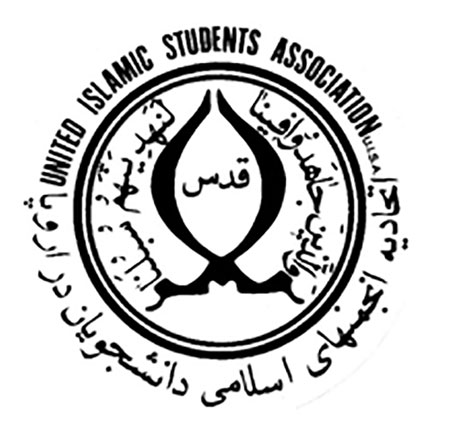
■ Are these people still alive except the late Ali Abrishami?
■Of course, I don’t have any news of Mr. Sadat Darbandi and Ayoub Shahin, but the rest are still alive.[4] After the second meeting was held about a month later, it was later called the "first meeting" of the March 12 to number the series of meetings. They did not call it "United" at the time, but rather its name was "General Assembly of the Islamic Association of Iranian Students in Europe". They also adopted a statute, a model of the Statute of the Student Organization of Tehran's University, with a series of changes as their own statute at that meeting. This was almost the basis of the formation of the United of Islamic Associations in Europe.
At the second meeting held on 5 November in 1966, they changed the name of the organization and chose the name "United Islamic Students Association in Europe". In the meantime, Mr. Beheshti was also in Hamburg, and most of them knew Mr. Beheshti beforehand; for example, Mr. Mehdi Navab was one of Mr. Beheshti's students at the "Religion and Knowledge School" in Qom and knew him from Iran in 12 March, it was supposed to tell Mr. Beheshti that we want to do this. They said you would not come out of UMSO because it was legally registered in Europe and especially in Germany. And they could continue their activities under that name and not to get involved in legal matters. The proposal was taken up by the members and they spoke with the UMSO’s leaders, as Mr. Haqiqi himself had a position in the organization.
The officials of "UMSO" agreed to work within the United of Islamic Societies, as a Persian group and hence the group's name was changed to "the United Islamic Students Association in Europe (Persian group)." Even journal "Fighting School", which was supposed to be published from the first sessions; it was published to number 8 earmarked "UMSO". After the sixth meeting, the United became independent, and they legally registered it in Registry Office and left UMSO.
■Did the late Beheshti offer further suggestions to the primary members of the United?
■ Yes. Mr. Beheshti had various suggestions that I made in the book.[5] (It is interesting that I heard from various people discussing this case, some believed that I have diminished the role of Mr. Beheshti, but some believed that I have highlighted it. He had a central role in guiding and advising young forces who didn’t have organizational experience. Except this case, the United's independence was one of his suggestions. Until the sixth meeting in 1971 when he returned to Iran, he consistently emphasized the question of the United's independence, and in particular its financial independence, and it was an interesting process in the United that continued until the last the United's meeting- i.e. the seventeenth meeting - and had advantage a lot. There were many for the United so that the United could remain independent, speak independently and take an independent position. The members really believed it and the idea of the United's independence was engraved on their minds. The political activities was another things that Mr. Beheshti proposed and accepted and later disputed for a while. He believed that if people was not equipped by weapons of science and culture, political issues would almost deviate them. (Of course, it is my interpretation). His point was that you must first make a cultural self-taught, then start a political career. This was not irrelevant; in fact, experience has shown that, because of lack of cultural debate in Confederation, every once in a while there would be a split and conflict over how secretaries should be chosen. The suggestion, which cultural work first should be taken place and that political work could be initiated after members developed culturally, led the United to a cohesion of content and then a form. Of course, there were forces within the United and then disagreements that needed to do politically activity overtly. Some members did political activities, but secretly and even without the name of the United. But the overt political ativities of the United began almost with the death of the late Shariati in the year of 1978. The cohesion that was made in the United 1966 to 1981 and had effects was due to the choice of that policies of financial independence, cultural self-taught, regular organizational activity, belief in forbidden and lawful affairs personally and in group.
■You mentioned that the United started its public political activity after Shariati's death. Did political declarations publish in journals of the United?
■Look! I said there was no public political activities. These activities was at the level of declarations and the announcement of positions in press. Until the death of Shariati, the United did not have public political activities, such as hunger strikes and demonstrations. Even the United's declarations were not publicly distributed. Sometimes members of Islamic Association were not recognizable in their own cities, except for very prominent individuals who were so-called 'egregious' but usually nobody did not know the members. The members were mostly secretive. One of the biggest achievements of the United in managing this kind of organization was that SAVAK[6] was by no means able to penetrate the members of the United. Sometimes, there may be 3-4 advocates in the community attending cultural seminars, but you would not find SAVAK influencers in the United because of the institutional cohesion, rules and adherence of the members to that systematic framework. That is why it was very difficult for SAVAK to penetrate. But SAVAK had penetrated in Confederation a lot. Do you know how many of them were members of the Confederation after the names of SAVAK’s forces and agents were published abroad? Because everyone could be the member of the Confederation, from every denomination could become a member of the Confederation. But joining to the United was not easy; according to the Articles of Associations, the new member should be monitored for six months to be identified as a Muslim. For six months, the individual was attending in cultural meetings and was under observation whether s/he prayed or respected the legal and illegal affairs or not. In Europe, it was difficult to keep from taboos and do necessary religious affairs. If one wanted to pretend as a Muslim, s/he would be revealed very quickly. In addition, the minimum supervision period was for 6 months, and some could not become a members for up to 2 years. This procedure created a very strong cohesion in the United that even SAVAK could not have an influential member in the united.
■What was the official organ of the United Islamic Student Association in Europe?
■At the first and second meeting, it was approved to publish the journal "Combative School" as the official organ of the United.
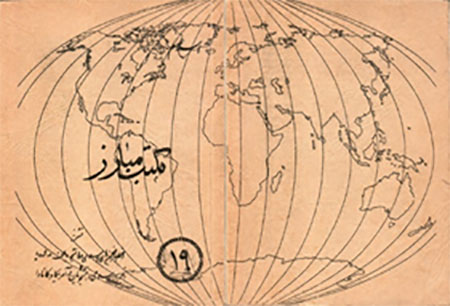
■Where did the name "Combative School" come from?
■As I did interview with early members, they said that they had chosen the name of the journal under the influence of engineer Mehdi Bazargan's book titled "Islam; the Combative School".[7] The" Combative School" was the first official publication of the United's organ.
■Did the United publish any other journals during its activity?
■ Yes. For example, Islamic ideology courses were organized in the Hamburg mosque by the effort of Mr. Beheshti in the early years of its activity. Those meetings were published as "Ideological Discussions". Then, the journal that was considered of the United's organ was named "Karameh" series. The Karameh series was published after the formation of Palestinian Committee in the United and the need to pay attention to the Palestinian struggles (formed by the Sixth meeting in the United). The series (which continued until the revolution) covered news about Palestine and their struggles with Israel.
■Where was the name "Karameh" come from?
■The name was chosen because of the respect for martyrs who were martyred in the Karameh area of Palestine. The eighth meeting of the monthly named "Quds" was published for Palestinian Committee, which became the main organ of the United Islamic Association, and all the statements, declarations and the announcements of position of the United being published in this journal.
■ Along with journal "Combative School"?
■The journal "Combative School" was published twice every six months- i.e. twice a year. The "Karameh" series had no particular order. But the Quds had a special order since it became an organ of the United and had been printed at about 8 to 16 pages almost every month.
■What was included in Quds journal?
■ Imam Khomeini's messages on various occasions, analyzes on Palestine, internal Iranian news, sometimes ideological discussions (such as ideological and religious debates in the journal "Combative School"), various messages of the fighters until after the Mojahedin began operations In 1975, when the organization changed its ideology all were published in the Quds journal with the headline of the United Islamic Associations in Europe.
■How many meetings of the United Islamic Associations was held in Europe?
■It held 17 meetings by Novber 1981, the first meeting was held after 8 months, from 12 March 1965 to 5 November 1966. The third meeting is in August 1967, which takes place almost 10 months after the second meeting. Then it was held yearly.
■What month were meetings being usually held?
■It was usually held in October, sometimes a little earlier or later, but they were being usually held in the middle of year; seventeen meetings were held until November 1981.
■You said that at the time of Shariati's death, the United had publicly revealed its political activity. What political activities did the United do publicly until the victory of revolution?
■The most prominent one was Shariati's funeral, which was almost the first public activity of the united.
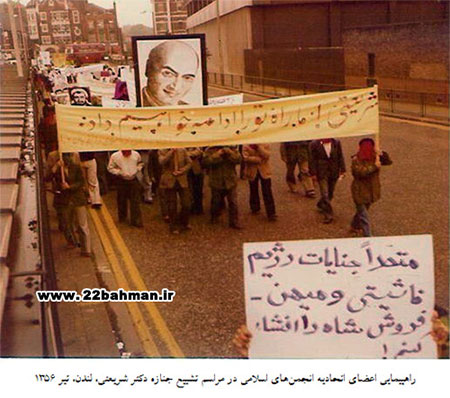
After the event of hunger strike in October 1978 at the Church of Saint-Marie in Paris attended by combatant clerics, there was a nationwide hunger strike took place in Rome, Paris, and England in the winter of 1977, and another hunger strike was held in October 1978, during the time of the presence of Imam Khomeini in Paris. Of course, there were other demonstrations on different occasions. Among the United's activities, Rome and Vatican hunger strike and demonstrations (the 1976 Winter Hunger Strike) that ware most prominent one.
■Was it taken place in year 1977 or 1978?
■March 1977
■Inside of Vatican?
■yes. Inside of Vatican's yard
■Vatican allowed the strike?
■No, the Vatican's police and the Italian police force seized the members and took them away; this even is mentioned in Volume 4 of History of Muslim Students' Campaign abroad.[8]
■In the meantime, if you look at the "Combative School" journal, you will find the number of them listed as "the United Islamic Students Association s in Europe and Islamic Students Associations in America and Canada.
■ Yes. Look at the cover written: the United Islamic Students Associations in Europe and Islamic Students Associations in America and Canada (below).
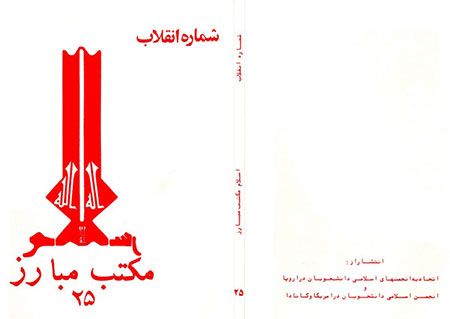
■About what year were the American and Canadian Islamic Associations were established?
■The process of establishing the Islamic Association in America was similar to Europe. There were also Islamic associations of Arab and non-Arab groups participated by Iranian Muslim students. The Islamic Association was also a religious and non-political one. On March 26, 1967, there was a conference of eastern region of American and Canadian Islamic Students Associations, attended by 150 people from 20 Islamic countries. At that conference, there were both Iranian and Afghan members. During the conference, Persian people came together to discuss the issue of establishing an independent association. Like Europe, they formed the "Islamic Student Associations in America and Canada (Farsi)."
■Who were the most prominent individuals in the formation of American Islamic Association?
■The most prominent individuals were Mr. Ebrahim Yazdi, Mohammad Hashemi, Mostafa Chamran, Dr. Mohammad Taghi Banki, Mohsen Nourbakhsh and a number of others.
■What year did they decide to publish jointly the journal "Combative School"?
■It's not just the journal "Combative School"; other books, published by the European Association, were joint activities. Apart from the organs mentioned, the European Union has also published various books, such as Shariati's books and Ayatollah Taleghani's book named "A Radiance from Qur'an",[9] if you look at their back cover, the names of both organizations have been published. This was done in the summer of 1972 and when it was approved in the eighth session. A joint editorial board consisted of three persons from United States and three persons from Europe to publish journal "Combative School" jointly, but generally most of technical works of journal "Combative School" was done in Europe.
■ were the three of them from Americans?
■The boards were changeable, the boards changed every year. The editorial board was usually selected by the Cultural Officer or through meetings, and journal "Combative School" was being published under their supervision". But the American Association usually did not interfere in the publication of journals except sending articles, because there was a mutual trust. At first, whenever they wanted to publish journal "Combative School", they should sending out lists and materials to the US, but as I got involved in the journal Combative School, we didn't send them to the Us , we were just giving the lists to show that such articles would be published; then we published them.
■ was there any other joint activity between the European Association and the American and Canadian associations except journal "Combative School"?
■Yes, other publications were jointly published. Other collaborations included sending agencies to each other's annual meetings, for example the US agencies came in European meetings, and European agencies attended at the annual Congress in the US. Yes other publications were jointly published. Other collaborations included sending delegates to each other's annual meetings, such as US delegates attending European meetings, and delegates attending congresses at the annual US Congress. For the sake of distance, they could not have any other joint activities, such as participating in demonstrations or strikes. But there was news exchange. Positions were exchanged to reach a common position. But it was not feasible to participate in a joint venture.
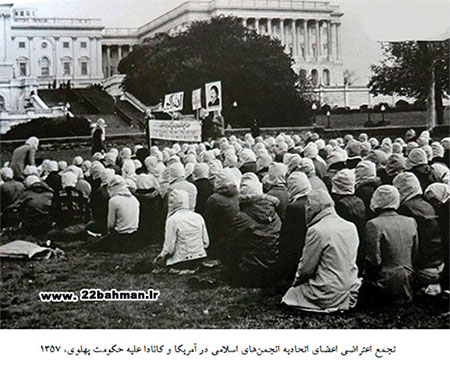
■If one is looking for research on American Association, s/he can find books and some memories. But there is nothing about the Canadian Association. Why?
■ Perhaps, it is because, at first, primary Islamic Association consisted of all Muslim forces was called the association of United States and Canada; the Iranian founders chose the name for their association.
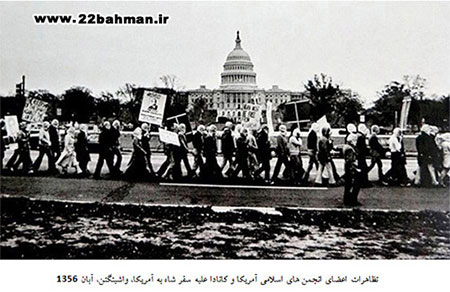
■When was the Islamic Indian Association established?
■With an increase in the number of Iranian students in India in the 1970s, Islamic association were established in academic cities. The founders of these associations are: Mr. Javad Sarafraz, Mr. Javad Salimi, and Mr. Mehdi Nabizadeh in the association of Bangalore city, Mr. Ahmed Hariri and Mr. Mukhtar Kalantari in the association of Pune City, Mr. Reza Bigzadeh, Mr. Hamid Modati and Mr. Rajab Ghadirzadeh in the association of Aligarh city. This is further discussed in the book of the late Sadegh Tabatabai's memoirs[10] and in the footnote on page 14 of Volume III of book named "History of Islamic Iranian Students’ Campaign abroad". According the approval of the Board of Directors and Sadegh Tabatabai went to India, Pakistan, Thailand and the Philippines and formed Islamic student center in each of these countries for the approval of the United Indian and Philippine Subcontinent Islamic Associations In 1976. These centers were later united by association on a nation-wide scale and later in the subcontinent. It should be noted that Islamic associations had already been formed in Syria and Lebanon, providing a coherent organizational connection through the efforts of the universities of Beirut, Syria, and several active members in Egypt. With the expansion of Islamic Student Associations in many countries, the plan to establish the World Organization of Muslim Students' Associations (Persians) was on agenda in mid-1977, with the necessary coordination with the Islamic Students Association of America and Canada. That is why, the United’s agent, Mr. Sadegh Tabatabai, again traveled to the Indian subcontinent in the same year to facilitate the implementation of the plan. When the agent returned, the preparation of the Statute of Organization was made with great effort and passed through the meetings of Europe, America and Canada; it was planned that the first preparatory meeting was to be held in west Germany with agents and the broads of all the units of world the spring of 1979, but it was not held after the victory of the Iran's Islamic Revolution and the return of many active members of the United. The first meeting of Indian Subcontinent Association was on January 16, 1978.
■ In October 2008, in a brief conversation with Mr. Manouchehr Mottaki, a member of the Islamic Indian Association (Foreign Minister), I heard that Mr. Tabatabai had come to India once but no one welcomed him. Does the words of Mr. Mottaki contradict your words?
■The message of the first meeting of the United Islamic Students Associations in India to Imam Khomeini on January 16, 1978 shows that it is true. In a part of this message mentioned: "We formed and organized the movement we had begun in the most difficult times to achieve our human and legal rights, with the help of God and the efforts and guidance of our European Association's members."
■This text shows that European students played a major role in the formation of India and Philippines Association. Don’t they?
■ Yes. They actually played a key role. At that time, the Indian and Philippine Association relied on the European Association because the American Association was distant, but all of their reliance in term of order and organization and getting institutional guidelines was based on European Association. I wonder why Mr. Mottaki said these words! Because he wrote for Imam Khomeini at the end of his massage:" The recent student solidarity (a hunger strike in Paris in October 1977) was a sign of this movement that showed students and clergy could be unified for Imam's leadership and the new Islamic movement." All their attention was on European Association's activities.
■The formation of Islamic Association in India indicates that there was a growing number of Iranian students, in the late 1970s, who decided to form an Islamic Association. The subcontinent seems to have been considered as a place of education. Why?
■ Yes. The Indian subcontinent had famous universities in the fields of medicine and laboratory science. If you remember, we were brought doctors from India during the Shah's regime when we hadn’t enough doctors in our country, because there were so many unemployed Indian medical graduates coming to Iran and practicing medicine. Many Iranian students immigrated to India in the 1970s, because it was cheaper than Europe and closer to Iran. That is why the Iranian students' immigration to India was increased in the 1970s.
■What about Philippines?
■The Philippines was in same condition. But I don't know exactly what fields students liked to educate in. But the students’ immigration to that area was almost simultaneous with students’ immigration to India, meaning we didn't have many Iranian students in Asia before. Since the age of 1974 and 1975, young people have gone to study there.
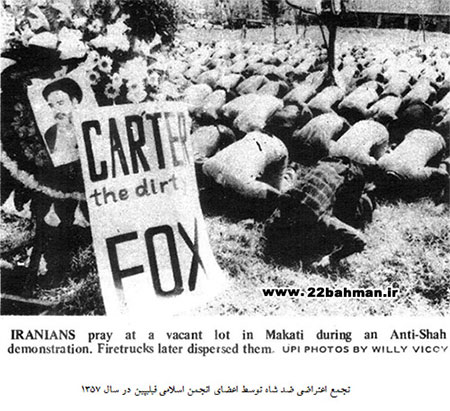
■In your opinion, what are the reasons for paying attention to the writing and historiography of the United Islamic Associations abroad?
■In my opinion, the history of the United was practical after the revolution. But if we were to say about its influence (which I have described many times in the book) it had a great impact on the advancement of revolution's and Imam's goals.
■How?
■ Imam Khomeini did not have any confidence in the United as much as European and American ones. We have not received any message from Imam with the name of an organization or a group. There were various organizations at that time, such as the Mojahedin-e Khalq Organization, Islamic Coordinating Committees, the Movement for the Liberation of Iran, the National Front of Iran, and so on. Be. Only the United Islamic Associations (Europe and America) was given the name. There were various organizations at that time, such as the Mojahedin-e Khalq Organization[11], Islamic Coordinating Committees, the Movement for the Liberation of Iran, the National Front of Iran, and so on; you can find an example of Imam Khomeini gave them a message with a special name, for example, with the name of Iranian Freedom Movement. He only used of the name of the United Islamic Associations (Europe and America) for his messages. This indicated that the imams trusted these organizations and forces, and that confidence existed until their last days he was abroad and afterwards. It was the only organization that received news of Imam Khomeini's activities and widely broadcasted them in Europe. These journals also came into Iran, and when they entered Iran they were eventually reproduced or copied. In my opinion, there was no movement in Iran to assist Imam Khomeini before the revolution as much as foreign movement. That is why I say that the role of Islamic Associations was unique in the process of revolution. I do not want to magnify too much, but as you can search, all the factors that contributed to the revolution can be compared to the effects that the United had on the revolution and see where the Untied was. Another important point is that if various aspects of the United's influence in the process of revolution could be highlighted in the early years of the revolution, it might play a key constructive and role, especially cultural role, which would have us free from many calamities. For example, one of the many aspects that I mentioned to you was the discipline-based organization and, in parallel, maintaining ethical standards and adhering to committed organizational rules and frameworks, such as statutes, approvals, and collective benefits. This was one of the factors that could have influenced on a larger scale of whole system of Islamic Republic. A few terms as I mentioned, such as cohesive organization, discipline, maintaining ethical standards, were the things that really respected in the United. Preservation of collective interests at national level is now called national interests preservation. Today, you see the culture of preserving national interests in Iranian society as fading, and in the sense of personal interests. But in the United Islamic Associations, Public Interest had priority over personal interests. That is to say, the United was always first and then the members. Other topics include the United's feature that respects the majority vote and the cooperation of all members after the approval of a topic with the its managers, athough it was not sometime their liking. For example, there was a debate at the United's meeting, whether they wanted to approve something or not. Some opposed it. But when it was approved by a majority vote, even those who initially opposed it would work with the United's board after approval, because the United has decided to do it. These are the characteristics of teamwork that we see less in society today.
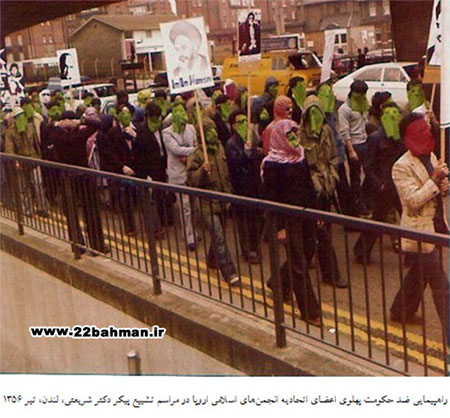
In the next case, we can mention independence in the political, economic, cultural and social aspects of the united. As I have stated at the suggestion of Dr. Beheshti and its approval, the United was not financially dependent on any group and individuals and its costs was financed by membership fees. Even members gave the income of one day in a month to the United's fund. It means sacrifice for an organization you believe in. This caused the United to depend on no group or organization for more than 16 years of its activities except for the leadership of Imam Khomeini and to maintain its practical independence. It was perhaps for this reason that the United was saved from the danger of separation for about 16 years.
■Why is the issue of the United Islamic Associations abroad not paid attention seriously?
■The Members of the United started to compile the history of the United from 1975 to 1974, and even it was approved at the United's meeting to write a history. But, unfortunately, it was neglected for several factors: the Members of the united were generally educating in technical filed at the time, there weren’t anyone in human's science, and especially history, because it is usually a desire for those who was educating in the human science. Students who were living in Germany and France and almost elsewhere in Europe were educated in technical fields such as electrical engineering, mechanics, agriculture; they were interested in writing research and study. After the European Students' Revolution, they were mostly educated in applied engineering, and started to work in their own fields in Iran and working as engineers in the public and private sectors. This has led to a separation in United's members' background, and ultimately facilitate in the compilation of the United Islamic Associations history. Since my arrival in Iran, one of my concerns was this issue, and I have been constantly discussing it with members. But unfortunately the documents of the United weren’t available for us and the lack of the documents made it impossible to compile a history. This lack of documents was one of the reasons that both the United's members and scholars did not pay much attention to this issue, and the first books on the topic of the United Islamic Associations were published after nearly three decades after the revolution.
To be continued…
[1] Bagharnejad, Mojtaba, History of Islamic Campaign of Iranian Students abroad; The United Islamic Students Association of Iran in Europe (1966-80), Tehran: Information Publication, 2008, Volume 1, p. 351
[2] It is a Sunni transnational Islamist movement that is popular in many Arab countries. The Ikhwan al-Muslim can be considered the largest Sunni political group in the world.
[3] Ibid, pp. 17- 20 ؛ 43 and 44
[4] It should be noted that when Asadullah Khaledi returned to Iran, he was arrested and prisoned for political activity. After the victory of the revolution and the beginning of the imposed war, he went to the front and was captured by Iraqi forces in Karbala 5 in February of 1987. He was released from captivity in September 1991 and finally died in 2005. For a narration of the biography of Asadollah Khaledi, see: Davood Bakhtiari Daneshvar, A Man Who Did Not Sleep, Memories of the Released Iranian Captive, Asadollah Khaledi, Tehran: Surah Mehr Press, 2005.
[5] Bagherrnejad, Mojtaba, ibid, pp. 78 and 79, 97 and 98
[6] It was the secret police, domestic security and intelligence service in Iran during the reign of the Pahlavi dynasty. It was established by Mohammad Reza Shah with the help of the U.S. Central Intelligence Agency and the Israeli Mossad.
[7] Bazargan, Mehdi, Generator and Combative School of Islam, Tehran, 1984
[8] Baqarnejad, Mojtaba, A History of Islamic Students' Campaigns Abroad, Tehran: Ettelaat Publication Ettelaat, 2015, Volume 4, pp. 152- 211and 477
[9] Taleghani, Mahmood, A Radiance from Qur'an, Tehran: Publication Corporation, 1984, 6 vols.
[10] Tabatabai, Sadegh, Political-Social Memoirs of Dr. Sadegh Tabatabai, Tehran: Arvoj Publishing, Volume 3, 2008
[11] The People's Mojahedin Organization of Iran, or the Mojahedin-e Khalq, is an Iranian political-militant organization based on Islamic and socialist ideology. It advocates overthrowing the Islamic Republic of Iran leadership and installing its own government.
Number of Visits: 6005
http://oral-history.ir/?page=post&id=8884
